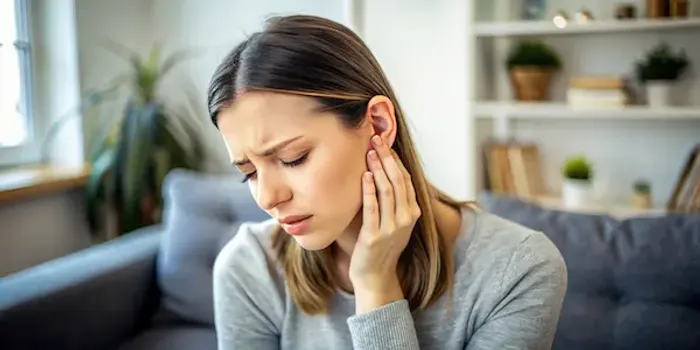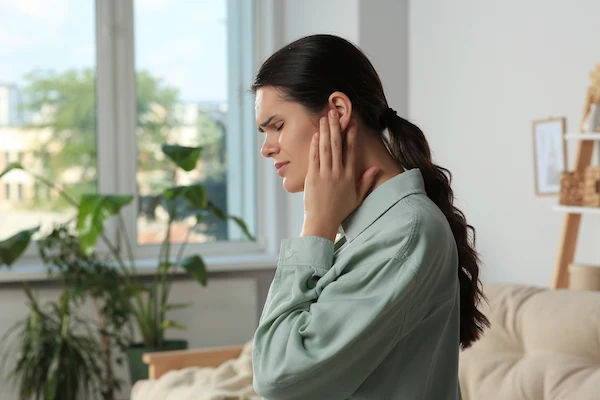Signs Of Ear Infection And Home Remedies
Ear infections cause pain and hearing trouble—learn how to spot early signs, decide when safe home care is enough, and when to seek medical help.


Introduction
Ear infections are among the most common causes of ear pain and discomfort in both children and adults. The challenge is knowing which signs point to a mild infection you can manage at home—and which require a doctor’s care. In this guide, we break down the early signs of an ear infection, the differences between middle-ear infections (otitis media) and outer-ear infections (otitis externa or “swimmer’s ear”), the best home remedies that actually help, and what to avoid. We also cover when to see a doctor, how ear infections are diagnosed and treated, and prevention tips you can use right away. Whether you’re a parent worried about a child tugging at their ear, an adult struggling with an earache after a cold, or a swimmer with itchy ears, this is your complete guide to fast relief and smart next steps.
What Is an Ear Infection? Types and Why They Happen
Ear infections come in two main forms—knowing which one matters for treatment.
Two common types
- Middle-ear infection (otitis media): Inflammation or infection behind the eardrum. Fluid can build up and cause pain,
fever, and temporary hearing loss—especially following a cold or upper respiratory infection. It’s particularly common in young children due to their shorter, narrower Eustachian tubes. - Outer-ear infection (otitis externa or “swimmer’s ear”): Irritation or infection of the ear canal skin, often after water exposure or trauma (for example, from cotton swabs). Symptoms include ear-canal pain (worsening when you tug the outer ear), itchy canal, and sometimes discharge. Hearing may be affected if swelling or debris blocks the canal.
Consult a Top General Practitioner for Personalised Advice
Why do ear infections occur
- After colds or allergies, the Eustachian tube can swell and trap fluid in the middle ear, creating a space where bacteria or viruses grow.
- In swimmer’s ear, trapped moisture disrupts the ear canal’s natural defences, allowing bacteria or fungi to proliferate; minor abrasions from swabs or earbuds increase the risk.
Unique insight: Many so-called “ear infections” start as inflammation from a viral cold; bacteria aren’t always the
culprit—this is one reason antibiotics are not always prescribed immediately.
Early Signs and Symptoms You Shouldn’t Ignore
Recognising the early warning signs can help you decide between home care and medical evaluation.
Classic symptoms
- Ear pain (sharp, throbbing or constant). In otitis media, pain often peaks at night or when lying down. In otitis externa,
pain worsens when you tug or press the outer ear. - A feeling of fullness or pressure in the ear, muffled hearing or temporary hearing loss.
- Fever, fussiness (in children), difficulty sleeping or poor feeding.
- Fluid drainage: clear, cloudy or pus-like; sometimes foul-smelling, especially in swimmer’s ear. Sudden relief of pain with drainage may indicate a ruptured eardrum.
Less obvious signs
- Tugging or rubbing the ear (especially in toddlers), imbalance or dizziness.
- Sore throat, nasal congestion or a recent cold preceding ear symptoms.
Red flags
- Severe pain, high fever (such as 39 °C / 102.2 °F or more), swelling behind the ear, worsening symptoms after 48–72 hours, or facial weakness.
- If symptoms persist beyond two weeks or worsen, seek medical advice (for example via an online consult with Apollo24|7).
Unique insight: Keep a simple 3-symptom log (pain score, fever, hearing) twice daily. This helps you judge whether home-care is working within 48–72 hours and guides timely escalation.
Children vs. Adults: How Symptoms and Care Differ
Ear infections present differently in children and adults—and care may vary accordingly.
Babies and toddlers
- More likely to have middle-ear infection after a cold; may present with ear tugging, crying, poor feeding, and fever. Many improve within 48 hours with pain control alone.
School-age kids and teens
- Similar to adults, though may struggle to describe fullness or hearing changes—ask about “echo” sensations or ear “pop”.
Adults
- Ear infections are less frequent in adulthood. Adults with persistent one-sided ear symptoms, especially with hearing loss, should be evaluated to exclude other causes (such as Eustachian tube dysfunction).
Unique insight: Day-care attendance, exposure to second-hand smoke and bottle-feeding while lying down increase children’s risk. Addressing these can reduce recurrent infections more than many interventions.
Home Remedies That Help (and What to Avoid)
Smart home-care helps relieve symptoms—but some popular remedies are ineffective or risky.
What actually helps at home
- Warm compress: A warm (not hot) washcloth over the affected ear for 10–15 minutes can reduce pain. Repeat as needed.
- Rest, hydration and head elevation: Sleeping with the head slightly elevated may reduce pressure in the middle ear.
- Gentle nasal care during a cold: Saline sprays and humidified air support Eustachian-tube drainage—especially in kids with colds.
- For swimmer’s ear: Keep the ear dry. Avoid swimming and keep water out until symptoms resolve. After showering, tilt the head to drain water; gently pat outer ear dry.
Evidence-based cautions
- Ear candles: Ineffective and unsafe—risk of burns, canal blockage and eardrum injury. Avoid entirely.
- Oils, garlic or herbal drops: Not recommended unless prescribed; some can irritate or mask serious problems. Never insert drops if you suspect a ruptured eardrum (signs: sudden drainage, sharp pain relief).
- Cotton swabs: Can push wax deeper, scratch the canal, and raise infection risk. Avoid inserting anything in the ear canal.
Natural relief options to discuss with your clinician
- Short-term topical anaesthetic drops (such as benzocaine–antipyrine) may ease ear pain from otitis media when the
eardrum is intact, but use only under professional guidance.
Unique insight: For swimmer’s ear prevention (not active infection), drying drops made of equal parts white vinegar and
rubbing alcohol can acidify and dry the canal after swimming—but do not use if you have ear tubes, a perforated eardrum or recent ear surgery—always consult your clinician first.
Over-the-Counter Options and Pain Relief
Effective symptom relief is key while the ear heals.
What works
- Pain relievers: Paracetamol (acetaminophen) or ibuprofen (as age-appropriate) reduce pain and fever in both children and
adults. Effective pain control is the most important early step. - Topical anaesthetic drops: Pharmacy-recommended drops may help short-term for acute otitis media if the eardrum is intact, but are not suitable if perforation or ear tubes exist.
What doesn’t help much
- Decongestants and antihistamines: Not shown to benefit acute otitis media in children and may carry side-effects; many guidelines recommend against their routine use.
- Routine antibiotics: For many children and most adults with mild/moderate symptoms, watchful waiting for 48-72 hours is appropriate before prescribing antibiotics, because many infections improve naturally.
Unique insight: Keep track of pain times (e.g., bedtime and morning). If pain is steadily improving with OTC medication over 48 hours, you’re likely on the right track. If pain remains intense or worsens, escalate care sooner.
When to See a Doctor—and What to Expect
Recognising when home care isn’t enough ensures timely medical intervention.
See a doctor urgently if
- Severe ear pain, high fever, swelling/redness behind the ear, stiff neck, severe headache, persistent vomiting or facial weakness.
- A child under 6 months with a suspected ear infection.
- Symptoms fail to improve after 48–72 hours of home care or worsen at any time.
Telehealth vs in-person
- If the pain is manageable and you observe no drainage or red-flag symptoms, a virtual consult can help triage and guide next steps.
- If symptoms persist beyond two weeks or you’re in a high-risk group, schedule an online consult with Apollo24|7 or an in-person visit.
High-risk groups
- People with diabetes, immune suppression, ear tubes, or prior ear surgery should seek care earlier to avoid complications.
Unique insight: Before your appointment, note onset date, peak fever, worst pain times, recent swimming, flights, colds, allergy flares and any new earbuds/earplugs use—this “timeline snapshot” helps your clinician pinpoint the type and best treatment.
How Doctors Diagnose Ear Infections
Accurate diagnosis distinguishes middle-ear vs outer-ear issues and guides correct treatment.
In-clinic tools
- Otoscopy: Examination of the eardrum for redness, bulging or perforation; checking the canal for swelling or debris.
- Pneumatic otoscopy/tympanometry: Assesses eardrum movement and middle-ear fluid—reduced mobility suggests fluid behind the eardrum.
- Ear canal swabs (in otitis externa): If severe or recurrent, cultures may help guide ear-drop choices.
Distinguishing types matters
- Otitis media: Bulging eardrum with decreased mobility plus recent URTI suggests middle-ear infection.
- Otitis externa: Tender outer ear, painful canal, especially with tragus pressure/pulling the ear—suggests swimmer’s ear; the eardrum may be difficult to visualise due to swelling.
Unique insight: A normal-looking eardrum does not rule out ear pain—jaw or dental issues can refer pain to the ear. If otoscopy is normal, your doctor may explore TMJ (jaw joint), dental, or throat causes instead.
Medical Treatments: From Watchful Waiting to Antibiotics (and Ear Drops)
There’s a spectrum of treatments—matching the right level to the severity matters.
Watchful waiting
- Many middle-ear infections, especially in children over 2 with mild/moderate symptoms, resolve without antibiotics
within 48-72 hours with good pain control. This approach reduces side effects and antibiotic resistance.
When antibiotics are indicated
- Severe symptoms, high fever, very young children (especially under 6 months), or persistent/worsening symptoms after watchful waiting. Amoxicillin is often first-line for acute otitis media unless contraindicated.
- Evidence: Antibiotics slightly reduce pain after the first 24 hours, but the benefits are modest, and many children improve without them.
Ear drops for otitis externa
- Topical antibiotic ± steroid ear drops are first-line for swimmer’s ear and often more effective than oral antibiotics. Pain control and drying the ear are essential. A “wick” (tiny sponge) may be placed if the canal is very swollen.
- Avoid using any drops if you suspect a perforated eardrum unless prescribed by a clinician.
Procedures for recurrent infections
- In cases of frequent middle-ear infections or persistent fluid with hearing impact, ear tubes (tympanostomy) may be
considered.
Unique insight: Ask your clinician about a “safety-net antibiotic prescription” (SNAP). If pain persists or worsens after 48 hours, you fill it; if you improve, you avoid unnecessary antibiotics. Many paediatric guidelines support this.
Prevention That Actually Works
Preventing ear infections is far easier than treating complications later.
For middle-ear infections
- Vaccination: Pneumococcal and annual influenza vaccines reduce ear infection risk by lowering respiratory infections that trigger middle-ear problems.
- Breastfeeding for at least 6 months, avoiding second-hand smoke, and feeding infants upright reduce the risk.
- Hand hygiene and limiting exposure during cold/flu season help.
For swimmer’s ear
- Keep ears dry: Use a bathing cap or custom earplugs; tilt and towel-dry after swimming. Consider preventive
acidifying/drying drops after water exposure if your clinician approves. - Don’t insert objects into ears: Avoid cotton swabs and scratching the canal.
Managing allergies and congestion
- Treating allergies or nasal inflammation may improve Eustachian-tube function in some, reducing ear-pressure issues that predispose to infections.
Unique insight: For children with frequent infections, a simple household smoke audit—eliminating smoke exposure at home and in cars—can be as effective as many medical interventions in reducing recurrences.
Recovery Timeline and Possible Complications
Understanding expected recovery and warning signs helps set realistic expectations and avoid problems.
How long do symptoms last
- Middle-ear infection: Pain and fever often improve within 48–72 hours; however, fluid and hearing muffling can persist for weeks (up to 12 weeks) before full resolution.
- Swimmer’s ear: Typically improves within a few days of starting correct ear drops, with full recovery in 7–10 days in uncomplicated cases.
Potential complications (uncommon)
- Eardrum perforation, persistent fluid (otitis media with effusion), temporary hearing loss, or rarely mastoiditis (bone
infection behind the ear). Prompt care for red flags reduces risks. - Adults with recurrent or one-sided ear fluid should be evaluated to exclude underlying causes.
Return to normal activities
- Children may return to school or daycare when fever-free and pain is manageable. Avoid swimming until cleared if swimmer’s ear was diagnosed.
- If symptoms plateau or worsen after 72 hours, or hearing doesn’t start to improve after a few weeks, consult a doctor or use a service such as Apollo24|7 for further evaluation.
Myths vs Facts About Ear Infections
Clearing up misconceptions helps you avoid ineffective or harmful practices.
Myth: “Antibiotics are always needed”
- Fact: Many ear infections improve without antibiotics; pain control is the priority and watchful waiting is safe in many
cases.
Myth: “Ear candles draw out wax & infection”
- Fact: Evidence shows ear candling is ineffective and dangerous—avoid entirely.
Myth: “Decongestants cure ear infections”
- Fact: They don’t help acute middle-ear infections in children and are not routinely recommended.
Myth: “All ear pain is an infection”
- Fact: Pain may originate from the jaw (TMJ), teeth, throat or neck; proper diagnosis matters.
Conclusion
Ear infections can be painful and worrying, but understanding the signs and having a smart plan makes them much more manageable. Recognising whether it’s a middle-ear (pressure, muffled hearing, often following a cold) or outer-ear infection (ear-canal pain with tugging, often after swimming) guides the right home care. Evidence shows that for many middle-ear infections, pain control, rest and watchful waiting are sufficient; swimmer’s ear typically responds well to prescription ear drops and keeping the ear dry. Prevention through vaccinations, a smoke-free environment, and water precautions pays off in the long term. If you or your child isn’t improving after 48–72 hours, symptoms are severe, or you’re in a high-risk group, it’s time to seek medical guidance. If symptoms persist for more than two weeks, consult a doctor online via Apollo24|7 or schedule an in-person visit. With the right information and timely support, most people recover quickly—and safely—from an ear infection.
Consult a Top General Practitioner for Personalised Advice
Consult a Top General Practitioner for Personalised Advice

Dr Syed Mateen Pasha
General Physician
2 Years • MBBS
Bengaluru
PRESTIGE SHANTHINIKETAN - SOCIETY CLINIC, Bengaluru

Dr. Vivek D
General Physician
4 Years • MBBS
Bengaluru
PRESTIGE SHANTHINIKETAN - SOCIETY CLINIC, Bengaluru

Dr. Anand Ravi
General Physician
2 Years • MBBS
Bengaluru
PRESTIGE SHANTHINIKETAN - SOCIETY CLINIC, Bengaluru

Dr. Ashita Kuruvilla
General Physician/ Internal Medicine Specialist
7 Years • MBBS
East Midnapore
VIVEKANANDA SEBA SADAN, East Midnapore

Dr. Debdatta Pati
Psychiatrist
18 Years • MBBS, DPM, MD (PSYCHIATRY)
Kolkata
MCR SUPER SPECIALITY POLY CLINIC & PATHOLOGY, Kolkata
Consult a Top General Practitioner for Personalised Advice

Dr Syed Mateen Pasha
General Physician
2 Years • MBBS
Bengaluru
PRESTIGE SHANTHINIKETAN - SOCIETY CLINIC, Bengaluru

Dr. Vivek D
General Physician
4 Years • MBBS
Bengaluru
PRESTIGE SHANTHINIKETAN - SOCIETY CLINIC, Bengaluru

Dr. Anand Ravi
General Physician
2 Years • MBBS
Bengaluru
PRESTIGE SHANTHINIKETAN - SOCIETY CLINIC, Bengaluru

Dr. Ashita Kuruvilla
General Physician/ Internal Medicine Specialist
7 Years • MBBS
East Midnapore
VIVEKANANDA SEBA SADAN, East Midnapore

Dr. Debdatta Pati
Psychiatrist
18 Years • MBBS, DPM, MD (PSYCHIATRY)
Kolkata
MCR SUPER SPECIALITY POLY CLINIC & PATHOLOGY, Kolkata
More articles from Ear infection middle ear
Frequently Asked Questions
Q 1) How can I tell if it’s an ear infection or just earwax buildup?
Earwax usually causes fullness, itchiness or mild hearing loss without fever. Infection adds pain (often sharp), possible fever and sometimes drainage. A clinician can confirm with otoscopy; avoid inserting cotton swabs.
Q 2) How long does an ear infection last without antibiotics?
Many middle-ear infections improve within 48–72 hours; hearing may remain muffled for weeks as fluid clears. If no improvement by day 3, seek care.
Q 3) What are the best home remedies for ear infection pain?
Age-appropriate paracetamol/ibuprofen, warm compresses, rest, head elevation and nasal saline during colds. Keep the ear dry for swimmer’s ear. Avoid ear candles and random oils.
Q 4) Do decongestants or antihistamines help ear infections?
They are not effective for acute middle-ear infections in children and are not routinely recommended. Focus instead on pain control and watchful waiting unless red flags appear.
Q 5) When should I worry about complications?
If there’s severe pain, high fever, swelling/redness behind the ear, facial weakness, or symptoms worsen after 72 hours, seek urgent care.

